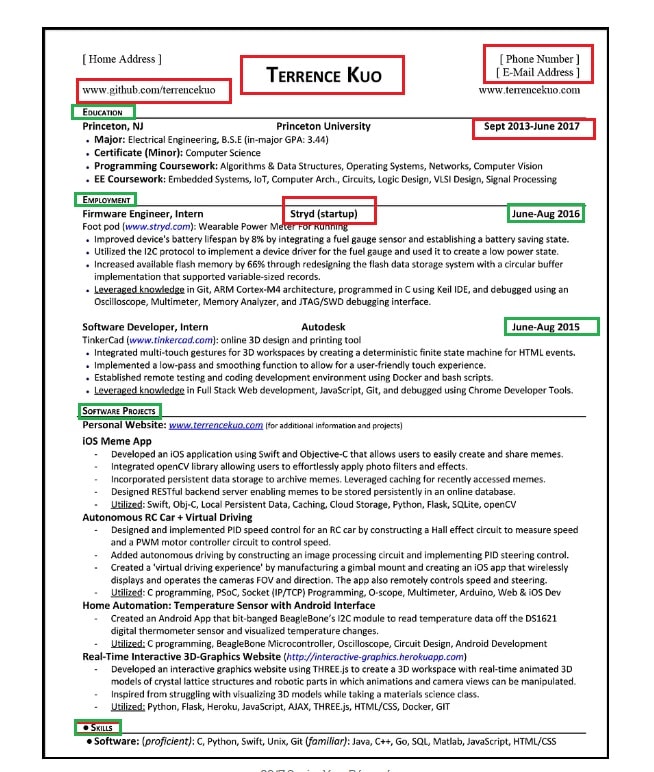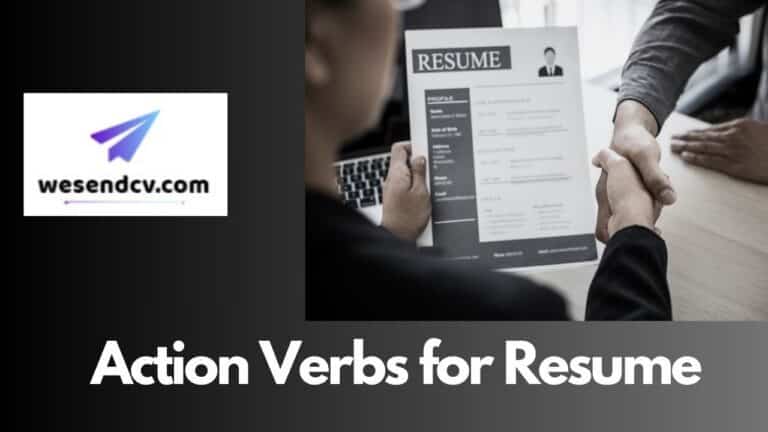Main Highlights of Content
ToggleUnderstanding the Basics of a Software Engineer Resume
A strong software engineer resume is critical for landing the right job. It’s essential that the resume clearly reflects the applicant’s technical skills, work experience, and educational background. Employers need to identify relevant competencies at a glance. A well-structured document can make this possible.
A software engineer’s CV should begin with a clear and concise professional summary. This sets the stage for what follows. Next, listing technical skills is crucial. The resume must highlight proficiency in various programming languages and tools.
Work experience should detail specific projects and achievements. This provides tangible evidence of capabilities. Education credentials are also essential. They demonstrate the foundational knowledge necessary for the role.
Tailoring the resume to each job posting improves the chances of success. Customizing content ensures alignment with job requirements, making the candidate’s application stand out to recruiters.
Key Components of a Software Engineer Resume
A well-crafted software engineer resume has essential elements that make it stand out. It begins with a strong professional summary. This is a brief overview of the applicant’s experience and skills.
Next, it lists technical skills. This section must detail programming languages, tools, and frameworks the candidate knows.
The work experience section follows. Here, each job entry should include the company name, job title, dates of employment, and specific responsibilities. Achievements and projects are crucial to mention as well.
Education is another key component. It shows the candidate’s academic background and relevant certifications or courses.
Lastly, including any notable projects or contributions to open-source communities can add value. These components together create a comprehensive software engineer CV that is informative and compelling for recruiters.
Importance of Tailoring Your Resume to the Job Description
Tailoring a resume to the job description is crucial. It shows the hiring manager you’re a good fit. By referencing specific skills and experiences mentioned in the job ad, you demonstrate relevance. This approach increases your chances of passing through Applicant Tracking Systems (ATS). ATS often filter out resumes that don’t meet certain criteria. Customizing your resume also allows you to highlight relevant projects and achievements. This can showcase your strengths and align them with the company’s needs.
Employers appreciate candidates who take the time to personalize their application. It reflects genuine interest and effort. Tailoring your CV makes it easier for recruiters to see how you could add value to their team. Therefore, always adjust your software engineer resume for each job application. This simple step can significantly boost your chances of landing an interview.
Structuring Your Software Engineer Resume
A well-structured software engineer resume is essential. Start with a clear header, including your name and contact information. Use a professional email address. Follow this with a concise professional summary. Next, outline your technical skills in a dedicated section. List relevant programming languages and tools you excel in.
Include your work experience in reverse chronological order. Highlight roles where you used your key skills. Use bullet points for clarity.
Example
Showcase your major projects and accomplishments within each role.
Education should be listed after work experience, especially if you have relevant degrees or certifications. If new to the field, place the education section higher up.
Finally, consider adding sections for certifications and professional affiliations. Ensure the resume is visually clean and easy to read. Avoid clutter and maintain consistent formatting throughout. This makes it easier for recruiters to review your qualifications swiftly and efficiently.
Formatting Guidelines for a Clear and Professional Resume
A clear and professional format is vital for a software engineer’s resume. Begin with a clean layout. Use a simple, readable font like Arial or Times New Roman. Stick to a font size between 10 and 12 points. Ensure consistent spacing and alignments throughout.
Use bold and italics sparingly to highlight key sections or achievements. Margins should be one inch on all sides for a balanced appearance. Employ bullet points for easy reading and to break up text.
Avoid using excessive colors or graphics, which can be distracting. Stick to a monochromatic color scheme for a polished look. Ensure the document is well-organized, with clear headings for each section.
Finally, save the resume as a PDF to maintain formatting across different devices and platforms. This ensures the resume looks professional when viewed by potential employers.
Organizing Sections to Highlight Your Skills and Experience
A well-organized software engineer’s resume starts with a clear structure. Begin with a strong header that includes your name, contact information, and LinkedIn profile. Next, add a professional summary to give a quick overview of your qualifications.
Follow the summary with a section dedicated to technical skills. List programming languages, frameworks, and tools you are proficient in. After that, detail your work experience. Use reverse chronological order, starting with the most recent position. In each job entry, include company name, role, and dates of employment. Emphasize key responsibilities and achievements with bullet points.
Include an education section to highlight your academic background. If relevant, add sections for certifications, projects, and publications. Finally, keep everything concise and relevant to the job you are applying for, ensuring the cv stands out to hiring managers.
Writing a Compelling Professional Summary
A compelling professional summary captures attention in just a few sentences. It provides an overview of the software engineer’s experience and key skills. Start with the number of years in the field. Mention specific technical proficiencies, such as programming languages or tools.
Include notable achievements or projects that demonstrate expertise. Highlight soft skills that are relevant to the role, like problem-solving and teamwork. Tailor this section to match the job description closely.
For example, if the job requires Java proficiency, emphasize that skill prominently. Avoid generic phrases; be concise and specific. This section should entice hiring managers to read further into the resume. A strong summary sets the tone for the entire document, creating a positive first impression. It shows clearly why this software engineer is a perfect fit for the position.
Key Elements to Include in Your Professional Summary
A strong professional summary should start with the number of years of experience. Mention core technical skills, such as programming languages and tools. Highlight notable achievements that demonstrate expertise in the field. For example, include successful project completions or awards.
Incorporate soft skills that contribute to job performance, like teamwork and problem-solving. Tailor-specific experiences and skills to align with the job description. If the role demands Java proficiency, ensure this is prominently featured.
Use concise language to avoid overwhelming the reader. Each sentence should add value and offer insight into the candidate’s qualifications. This summary sets the stage for the details in the rest of the resume, providing a snapshot of why the candidate is an ideal fit for the position.
Effective summaries are clear, tailored, and highlight the most impressive aspects of a candidate’s professional journey.
Tips for Crafting a Strong Introduction to Your Resume
Starting a resume with a compelling introduction catches the recruiter’s eye. First, be clear and succinct. Avoid jargon and unnecessary fluff. Use a direct approach to mention relevant software engineering skills. State years of experience right away. Mention specific roles or industries worked in, such as mobile development or cybersecurity.
Showcase unique achievements or recognitions next. For example, “Led a team that developed a top-rated app.” Personalize the introduction to match the job description. If the job asks for Java expertise, highlight that early on.
Include soft skills that make a difference, like problem-solving abilities or teamwork. Ensure the introduction aligns with the rest of the resume’s content. It should set a strong foundation for details in the following sections.
End with a summary statement that ties everything together, offering a quick glimpse of what makes the candidate stand out.
Showcasing Your Technical Skills
In a software engineer resume, technical skills must stand out. Begin by listing programming languages like Java, Python, or C++. Make sure each skill mentioned is relevant to the job description.
Include software and tools proficiency, such as Git, Docker, or Jenkins. Use bullet points for clarity and easy reading. Prioritize the most relevant skills at the top of the list.
Don’t forget to mention any specialized skills like machine learning or cloud computing. If possible, give context for your skills. For example, “Experience with AWS for deploying scalable applications.”
Certifications can also boost your resume. Mention any completed courses or obtained credentials. Showing both breadth and depth in skills makes a stronger impression.
This approach ensures that hiring managers quickly recognize the technical expertise of the candidate.
Listing Technical Skills in a Clear and Impactful Manner
When listing technical skills on a software engineer resume, clarity is critical. Use bullet points for easy reading. Group related skills together, like programming languages and tools. Place the most relevant skills at the top.
Detail-specific programming languages such as Java, Python, and C++. Include software like Git and tools like Docker or Jenkins. Mention frameworks, for instance, React or Angular, if relevant.
Briefly note the level of proficiency where appropriate: beginner, intermediate, or expert. Avoid overstating abilities; employers value honesty.
For specialized skills such as machine learning or cloud computing, provide context. An example could be, “Proficient in AWS for deploying scalable applications.”
This method ensures hiring managers immediately see the candidate’s capabilities. Clear, concise skill listings add a significant impact to any software engineer cv.
Demonstrating Proficiency in Programming Languages and Tools
A software engineer should provide concrete examples to demonstrate proficiency in programming languages and tools. Mention specific languages like JavaScript, Python, or C++. If familiar with tools like Git or Docker, list them as well. Provide context by describing how these tools were used in past projects.
For instance, instead of just listing “Python,” include a brief detail such as “used Python for data analysis in a machine learning project.” This approach paints a clearer picture of the candidate’s expertise. Include any certifications or courses completed in relevant languages or tools.
Quantifiable achievements further showcase proficiency. For example, “Reduced load times by 30% using React for frontend development.” Such specifics catch the hiring manager’s eye and provide tangible proof of skills. This method helps ensure the cv stands out effectively.
Highlighting Your Work Experience
- Describing your work experience with action verbs and achievements
Use strong action verbs to describe past roles. Words like “developed,” “managed,” and “implemented” stand out. Clearly state responsibilities held. Detail the specific tasks performed. Emphasize achievements and measurable outcomes. This method helps convey impact in previous positions.
- Showcasing projects and accomplishments relevant to the job
Include projects aligned with the job you’re applying for. Give details about your role and contributions. Highlight technologies used and problems solved. Use bullet points for clarity. Mention any notable successes, metrics, or awards. This approach demonstrates relevance and expertise. Provide context to make your work experience compelling and tailored.
- Proofreading and Editing for Errors and Clarity
Ensure there are no typos or grammatical errors. Read through each section carefully. Check for consistency in formatting. Have a peer review your cv if possible. Clear and error-free resumes make stronger impressions on hiring managers.
This concise technique better emphasizes significant milestones in a candidate’s career, making their software engineer cv more effective.
Describing Your Work Experience with Action Verbs and Achievements
Utilize strong action verbs to describe past roles. Words like “developed,” “managed,” and “implemented” create impact. Clearly outline daily responsibilities. Detail specific tasks performed in each role. Highlight achievements with measurable outcomes. Mention any increased efficiency, revenue, or cost savings.
Provide metrics whenever possible. For example, “Reduced software deployment time by 20%.” Focus on contributions made to team projects. Describe how individual efforts supported company goals. Use bullet points for clarity and readability.
Emphasize promotions or increased responsibilities. This showcases professional growth. Tailor descriptions to align with the job applied for. Show relevance to the prospective role. This approach conveys effectiveness and value in previous positions.
Showcasing Projects and Accomplishments Relevant to the Job
When showcasing projects on a software engineer’s resume, it’s crucial to highlight the relevance to the job applied for. Include detailed descriptions of significant projects. Focus on those reflecting key skills required by the prospective employer.
Mention specific roles and contributions. Outline responsibilities and demonstrate impact. For example, detail how you improved the performance of an application or resolved a critical issue. Use metrics to quantify achievements like “Reduced loading time by 30%.”
Emphasize innovative solutions and technologies used. Projects involving teamwork or leadership should note collaboration and coordination efforts. This shows the ability to work within a team setting.
Lastly, align these accomplishments with the job requirements listed in the description. Tailoring project descriptions maximizes appeal to hiring managers. This approach ensures relevance and strengthens your resume’s effectiveness.
Finalizing Your Software Engineer Resume
Proofreading and Editing for Errors and Clarity
Before submitting, it’s essential to thoroughly proofread your resume. This catches any grammar or spelling mistakes, ensuring a polished document. Reading aloud can help spot awkward phrasing. Seeking feedback from peers or using professional editing tools also enhances clarity.
Tailoring Your Resume for Different Job Applications
Each job application might require slight tweaks to your resume. Adjust the professional summary and keywords to align with specific job descriptions. Keep the core sections intact while emphasizing relevant skills and experiences. Tailoring ensures that your software engineer CV resonates with each potential employer, increasing your chances of landing interviews.
By following these steps, you ensure that your software engineer resume is clear and compelling. This final pass-through helps present a professional and precise document to hiring managers.
Proofreading and Editing for Errors and Clarity
Before submitting a software engineer cv, one must thoroughly proofread the document. This ensures no grammar or spelling errors are present, which could detract from professionalism. Reading the resume aloud can help catch awkward phrasing and unclear sentences. Seeking feedback from peers provides a fresh perspective on the document’s clarity.
Using professional editing tools is also beneficial. Tools such as Grammarly or Hemingway Editor can highlight issues that might be overlooked. Small errors can make a big difference in first impressions.
Finally, it is crucial to review formatting consistency. Ensuring that font sizes, styles, and spacing are uniform across the document contributes to a polished look. This attention to detail showcases meticulousness, an essential trait for any software engineer. These steps help present a clean and precise software engineer resume to hiring managers.
Tailoring Your Resume for Different Job Applications
Each job application is unique, requiring a customized resume for the best results. A software engineer cv should reflect the specific requirements of the job description. Keywords from the job posting can be integrated into the resume to align with what hiring managers are looking for. This helps in passing through Applicant Tracking Systems (ATS).
Emphasize relevant experience and skills that match the job role. For instance, if a position emphasizes experience with Java, prioritize your Java projects and achievements. Also, removing irrelevant or outdated information can streamline the document and make it more focused.
Adjusting the professional summary to echo the job’s core requirements makes a strong initial impression. Finally, customizing each cv demonstrates attentiveness and a genuine interest in the position, increasing chances of landing an interview.









